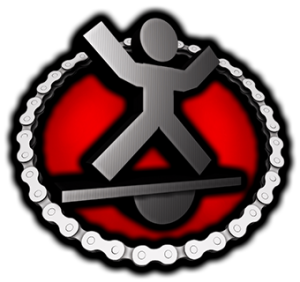The term golfer’s elbow refers to pain occurring over the inner (medial) aspect of the elbow. The injury is not exclusive to golfers, and is actually referred to clinically as medial epicondylitis. It is associated with inflammation in the tendons of the muscles involved in flexing the wrist and fingers. Pain is generally felt at, or near the bony prominence on the inner aspect of the elbow (medial epicondyle). Symptoms are often aggravated by gripping activities and by wrist flexion. The problem is caused in golfers by repeated or sudden club-face contact with the ground prior to striking the ball. The result is microtears and ensuing inflammation in the muscles and/or tendons involved in flexing the wrist and fingers.
FACTORS
Golfer’s elbow may be caused through repetitive use/trauma, or by a single episode of overloading the muscles and tendons affected. Examples of repetitive activities that could lead to problems include gripping, hammering, driving screws, playing certain musical instruments, canoeing, weight lifting, digging, and of course golf or other sports activities.
An acute strain of the muscles may be caused by lifting or pulling heavy weight, sudden forceful gripping, or large eccentric1 loads place on the muscles involved.
Someone may be predisposed to Golfer’s elbow if they have a job or regular activity that involves repeated use of the flexor muscles. Furthermore, neck and shoulder problems can often be associated with pain at the elbow. These areas often refer pain to the elbow, or cause elevated tone in the flexor muscles which may predispose someone to this injury.
As with Tennis Elbow, ergonomics play a role in preventing and minimizing the effects of Golfer’s Elbow. A poor work station set-up at a computer, poorly designed tools, or awkward lifting positions can be a recipe for injury.
PREVENTION
Like Tennis Elbow, the best way to deal with Golfer’s Elbow is to not get it in the first place. At the first signs of pain or tightness on the medial side of the elbow, take steps to eliminate the causative factors. Here are some tips for preventing Golfer’s Elbow:
- Minimize repetitious activities. If this is not possible, get advice from a physiotherapist on ergonomic adjustments that can be made.
- If the problem is from golfing, consult your local golf pro to make the necessary changes which will prevent a reoccurrence in the future.
- Make adjustments to equipment to suit the size of your hands. Grips that are too large or too small can cause increased load on the tendons of the flexor muscles.
- As with Tennis Elbow, grip less tightly. A lighter grip often improves your “touch” and can ease strain on forearm muscles.
- An armband (as prescribed by your doctor or physiotherapist) can prevent recurrences of Golfer’s Elbow.
- Immediate treatment of pain or injury is the most effective way of preventing a problem from escalating into a long-term injury.
TREATMENT
Initially, as per the R.I.C.E. guidelines, apply ice (not directly to the skin; use a towel for seperation) to the affected area for 10-15 minutes. Rest and compression may also help to relieve the pain from the injury. Examination by a physiotherapist may help to determine the specific cause and biomechanics of the injury. This information is important so the appropriate structures and movement patterns can be targeted for therapy.
Gentle stretching may begin almost immediately, but care must be taken not to aggravate the injury by stretching to aggressively. Often, the best stretch for Golfer’s Elbow involves straightening the elbow (elbow extension) and bending the wrist backwards (wrist extension).
Depending on the extent of the injury, your physiotherapist may decide to implement various treatment options, including both manual techniques and the appropriate physical modalities. Manual therapy may involve passive exercise, soft tissue manipulation or massage. In most cases, the modality used to deal with inflammation in the tendon is ultrasound, however other electrotherapy choices may be appropriate.
Once the initial healing phase has completed, muscle strengthening should begin to prevent recurrence of this injury. If this takes place too soon it will actually further the injury.
Lastly, your physiotherapist may discuss other options such as bracing or taping during the course of the injury, and should most definitely answer any questions you may have.
All of the previously mentioned tips for prevention of Golfer’s Elbow are equally as important when treating the injury. The only question is the degree to which one must change their activities, which depends on the nature and severity of the injury. Your physiotherapist should look at all aspects of the injury, beyond simply treating the symptoms.
Your physician may prescribe some anti-inflammatory medication, as well as provide some other options for treatment.
